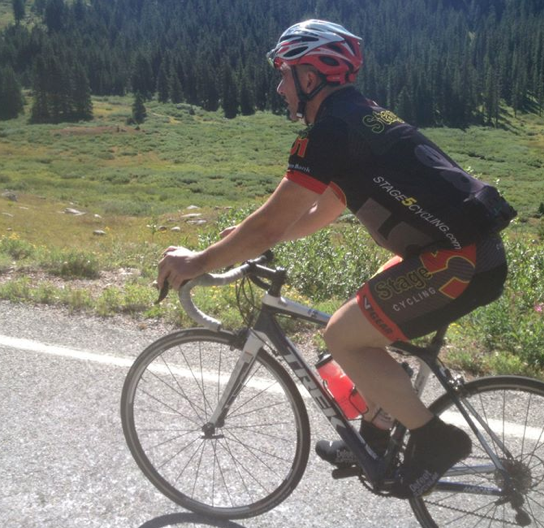One never wants to be reminded of something forgotten after the fact, particularly when it is something you preach regularly as a coach. It has been an exciting two months as I’ve transitioned from my role with Cycling Fusion to director of education and technology with ICA. There is always a learning curve understanding all aspects of a new job, plus learning how Jennifer and I can work best together as partners. There is no better way to do this than to spend some face-to-face time.
Last week I flew out to Colorado to brainstorm with Jennifer about ICA’s updated master plan for taking over the world and to give us some hang time to catch up. Interwoven into my visit was the opportunity to ride and watch a number of the stages of the USA Pro Cycling Challenge (the pro bicycle race in Colorado). Very cool! Amongst all of the excitement of getting to see such a prestigious race, I was concerned with my cycling fitness and how I would fare on the climbs at altitude. Before coming to Colorado, my knee-jerk reaction was to immediately start to ride more and to find everything in striking distance that I could climb. In doing so, my legs felt dead and did not appear to want to respond. Upon arriving in Colorado, nothing had changed. I was able to ride and climb, but without the usual spirited energy I’m used to.
What Does This Have to Do With Indoor Cycling?


I also take the 2 week break off over christmas and always encourage my clients to take off the time. i spend a lot of time talking about physiology of recovery, anecdotal stories of improved output after a break etc. I regularly fake it and also get off the bike too. It isn’t my workout and I am really happy to chat to anyone who complains I should ride the whole class. I own a yoga studio and teach pilates anywhere up to 20 classes a week so doing all the work is not an option.I get a bit concerned when I see a couple of clients backing up with PT sessions at lunch after a very hard class with me in the early morning. THat seems like a waste of money to me. I think we get too caught up in “more is more” when we know the physiological response of overtraining, I like to know i can go for a run or a ride without thinking too hard about how much teaching I have done.
I love to teach off of the bike and my students love it as well, although they pretend that they don’t. First, when I unclip, most of my students will suddenly become honest with that resistance knob! Second, I can offer individual attention, covering my microphone, of course. I can motivate them and urge them on. I can pay close attention to how much longer they have to “hold on” and encouraging them not to quit. I can see the back row easily when off of the bike and urge all to not lean forward when fatigued. You have got to try it…your class will have a fabulous workout and you won’t be a sweaty mess answering their questions after class.
Love it Lynn! You’ve captured many of the benefits of teaching off the bike. I particularly like how riders will “get serious” when they see you approaching.
Considering my teaching approach is more coaching, I like to head to the back of the room to hear the music volume and balance of voice. So many benefits to getting off the bike!
In my personal plan for my year, I take off all of December. Nine to twelve times a week for four weeks I get a chance to talk about the importance of recovery. I have found that that’s a great time of year to plant the seed with people. They are all exhausted from a busy fall and the stresses of the holiday season. They understand what fatigue feels like and can appreciate the benefits of taking some time off to recover.
I get a chance to renew the discussion at other times of the year when I declare my breaks rather than attempting to cover for them. Since many of my students see me ride outside they really appreciate that recovery makes me stronger, not weaker. That factors into their own behaviour in a very constructive way.
Right on Christine. “Recovery makes me Stronger, NOT Weaker”. Love it!
great article, thank you for the ideas 🙂